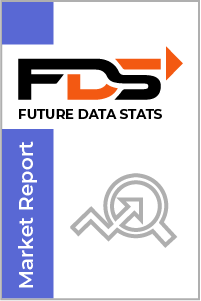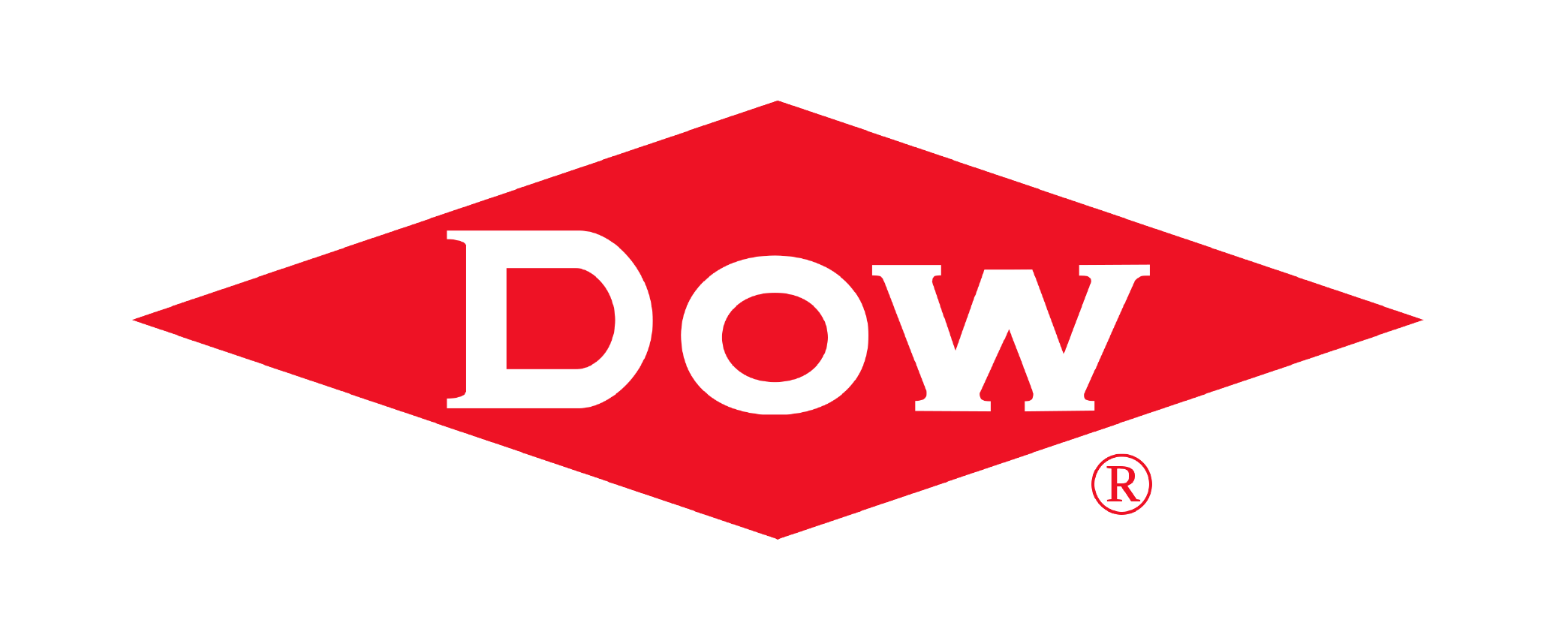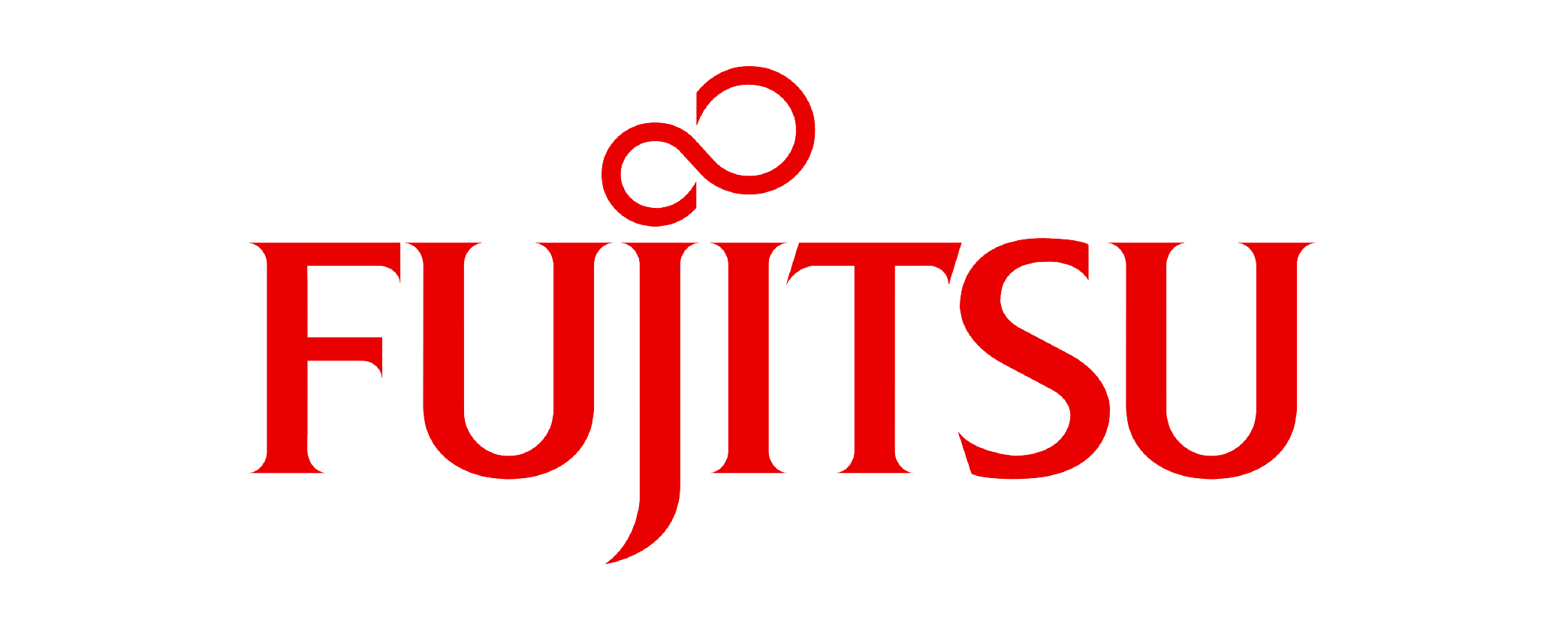The global Luxury Travel market size was valued at USD 1011.50 billion in 2023 and is projected to expand at a compound annual growth rate (CAGR) of 8.1% during the forecast period, reaching a value of USD 2235.60 billion by 2030.
Luxury Travel market research report by Future Data Stats, offers a comprehensive view of the market's historical data from 2018 to 2021, capturing trends, growth patterns, and key drivers. It establishes 2022 as the base year, analyzing the market landscape, consumer behavior, competition, and regulations. Additionally, the report presents a well-researched forecast period from 2023 to 2030, leveraging data analysis techniques to project the market's growth trajectory, emerging opportunities, and anticipated challenges.
MARKET OVERVIEW:
Luxury travel is a niche segment of the tourism industry that caters to discerning travelers seeking exceptional and exclusive experiences. It goes beyond standard vacations, focusing on providing travelers with the utmost comfort, personalized services, and unique opportunities. Luxury travel often involves staying in upscale accommodations, such as luxury resorts, boutique hotels, or private villas, where attention to detail and top-notch amenities are paramount. Travelers can expect bespoke itineraries tailored to their preferences, whether it's exploring remote destinations, embarking on private yacht charters, or indulging in gourmet dining experiences. Overall, luxury travel is defined by its dedication to creating memorable and extraordinary journeys that cater to the desires and tastes of affluent travelers.
What sets luxury travel apart is the emphasis on exclusivity and authenticity. Travelers can access remote and less-visited destinations, engage in culturally immersive experiences, and enjoy VIP treatment throughout their journey. This type of travel often comes with a premium price tag, but it aims to exceed expectations by delivering unparalleled comfort, privacy, and personalized attention. Luxury travel is a reflection of a desire for unique and unforgettable experiences, where travelers can create lasting memories and savor the finer aspects of the world's most exceptional destinations.
MARKET DYNAMICS:
The primary drivers behind the expansion of this sector is the increasing disposable income of affluent travelers who seek exclusive, unique, and personalized experiences. Luxury travel offers a gateway to opulence, enabling travelers to indulge in high-end accommodations, gourmet dining, and tailor-made itineraries. Moreover, the desire for authenticity and cultural immersion has fueled the demand for luxury travel, with discerning travelers seeking genuine connections with local communities and environments. Additionally, advancements in technology and digital platforms have enhanced accessibility, making it easier for consumers to discover and book luxury travel experiences. These drivers collectively create a conducive environment for the luxury travel market to thrive.
However, the luxury travel industry is not without its challenges. The ongoing global economic uncertainties and occasional geopolitical tensions can impact consumer confidence and travel choices, affecting the luxury travel market. Furthermore, sustainability concerns are increasingly coming to the forefront, pressuring the industry to adopt eco-friendly practices and reduce its carbon footprint. Striking a balance between luxury and sustainability remains a challenge, necessitating innovation and commitment from industry stakeholders. Nevertheless, these challenges also present opportunities for market players to differentiate themselves by embracing responsible and eco-conscious luxury travel.
LUXURY TRAVEL MARKET SEGMENTAL ANALYSIS
BY TYPE:
Adventure Luxury Travel stands out as a prominent segment, attracting thrill-seekers who seek adrenaline-pumping experiences in exotic destinations. From heli-skiing in the Swiss Alps to exploring remote rainforests, adventure luxury travel offers high-end accommodations and bespoke itineraries tailored to adrenaline enthusiasts.
Cultural Luxury Travel focuses on providing travelers with immersive experiences that delve deep into the heritage and traditions of a destination. This type of travel often includes guided tours to historical sites, private access to museums, and opportunities to engage with local artisans and cultural experts. Wellness Luxury Travel has also gained significant traction, with travelers prioritizing their health and well-being. This segment offers luxurious spa retreats, yoga and meditation getaways, and personalized wellness programs in stunning settings.
BY APPLICATION:
The segmentation of the market by application highlights the diverse needs of travelers seeking exclusive experiences. Leisure luxury travel remains a dominant factor in this sector, with discerning individuals and families seeking relaxation and rejuvenation in opulent surroundings. This segment includes those who desire to unwind at high-end beach resorts, explore cultural destinations in style, or embark on adventure-laden journeys while indulging in luxury amenities.
Business luxury travel is another influential aspect of the market, driven by corporate travelers who prioritize comfort and convenience while conducting business affairs globally. The demand for luxury accommodations and services has spurred the growth of this segment, with high-end hotels and executive lounges catering to the unique needs of these travelers. Honeymoon luxury travel is also a prominent factor, with newlyweds seeking romantic and intimate getaways in exquisite settings. The luxury travel industry caters to these couples by offering honeymoon packages that include luxurious accommodations and romantic experiences.
Families, seeking unforgettable bonding experiences, are a considerable driving force in the luxury travel market. Family luxury travel offers tailored solutions that cater to the needs of both parents and children, ensuring an unforgettable vacation for all. Group luxury travel is popular among friends and like-minded travelers who wish to explore the world together while enjoying the comforts of luxury. Solo luxury travel, on the other hand, caters to independent adventurers who relish the freedom to design their luxurious journeys according to their preferences. Special occasion luxury travel encompasses a wide range of milestones, from milestone birthdays to anniversaries and celebrations, with travelers looking to commemorate these events with unforgettable luxury experiences.
BY DESTINATION:
International luxury travel holds a dominant position in this sector, driven by the desire for exotic and culturally rich experiences. Discerning travelers seek to explore new horizons, immerse themselves in different cultures, and savor the finest accommodations and services on a global scale. This segment includes those who embark on transcontinental adventures, explore the wonders of ancient cities, or bask in the splendor of renowned international tourist destinations.
In contrast, domestic luxury travel remains a strong contender in the market, as many travelers are increasingly discovering the allure of their own countries. This segment caters to those who wish to explore the hidden gems and luxurious retreats within their homeland. It often includes experiences such as high-end countryside escapes, luxury spa resorts, and exclusive cultural tours.
Experiential luxury travel is a growing trend that transcends traditional boundaries. It encompasses a wide range of activities that offer unique and immersive experiences, from culinary tours in exotic locales to wildlife safaris in remote regions. Heritage luxury travel appeals to history enthusiasts who seek to explore the rich cultural and historical legacies of destinations. Island luxury travel is driven by the allure of pristine beaches, crystal-clear waters, and secluded private resorts, offering travelers a tropical paradise to unwind and rejuvenate. Mountain luxury travel attracts adventurers and nature enthusiasts, who are drawn to the serenity and adventure opportunities in high-altitude destinations. City luxury travel offers the sophistication of urban exploration with stays in luxurious city-center hotels and access to vibrant cultural and culinary scenes.
REGIONAL ANALYSIS:
The regional analysis of the luxury travel market reveals distinct trends and dynamics across various parts of the globe. North America, as a prominent player in the luxury travel industry, boasts a well-established market characterized by a strong demand for upscale experiences. Affluent travelers in North America seek diverse luxury options, from luxurious city breaks to remote wilderness retreats. Europe, with its rich history and cultural heritage, continues to be a prime destination for luxury travelers. The continent offers a plethora of high-end accommodations, Michelin-starred dining, and immersive cultural experiences.
Asia Pacific is emerging as a dynamic force in the luxury travel market, driven by the region's economic growth and a rising middle class. Travelers here are increasingly seeking both traditional and contemporary luxury experiences, from tranquil beach getaways to urban extravagance. Latin America's luxury travel market showcases the region's natural beauty and cultural richness, attracting travelers seeking unique, off-the-beaten-path experiences. Meanwhile, the Middle East and Africa present a blend of luxury and tradition, with opulent resorts in desert oases and wildlife safaris in pristine landscapes.
COVID-19 IMPACT:
Travel restrictions, lockdowns, and health concerns led to a sharp decline in international and domestic luxury travel. The pandemic forced many affluent travelers to cancel or postpone their plans, resulting in revenue losses for luxury travel providers. Additionally, the emphasis on health and safety measures compelled the industry to adapt quickly, implementing rigorous sanitation protocols and safety measures in order to reassure travelers and regain their confidence. However, amidst these challenges, some segments of the luxury travel market, such as private villas and remote, exclusive destinations, experienced increased demand as travelers sought seclusion and privacy.
INDUSTRY ANALYSIS:
Mergers & Acquisitions:
- KKR acquires Splendia: In 2023, KKR, a global investment firm, acquired Splendia, a luxury hotel booking platform, for €400 million.
- Advent International acquires Abercrombie & Kent: In 2022, Advent International, a private equity firm, acquired Abercrombie & Kent, a luxury travel operator, for $1.4 billion.
- EQT acquires Exploria: In 2022, EQT, a private equity firm, acquired Exploria, a luxury adventure travel company, for $3.9 billion.
Product New Launches:
- Four Seasons Private Jet: In 2023, Four Seasons Hotels and Resorts launched a new private jet experience, offering guests the opportunity to travel to some of the world's most exclusive destinations in luxury.
- Belmond Grand Hibernian: In 2022, Belmond launched the Grand Hibernian, a new luxury train tour of Ireland. The train features 10 beautifully appointed carriages, each with its own private en-suite bathroom.
- Aman Nai Lert Park: In 2022, Aman Resorts launched the Aman Nai Lert Park, a new luxury resort in Bangkok, Thailand. The resort features 54 spacious villas, all with their own private pools and gardens.
KEY MARKET PLAYERS:
- Four Seasons Hotels and Resorts
- The Ritz-Carlton Hotel Company
- Aman Resorts
- Rosewood Hotels and Resorts
- Belmond
- Mandarin Oriental Hotel Group
- St. Regis Hotels & Resorts
- Six Senses Hotels Resorts Spas
- Waldorf Astoria Hotels & Resorts
- Relais & Châteaux
- Abercrombie & Kent
- Virtuoso
- Tauck World Discovery
- TCS World Travel
- Micato Safaris
- Kensington Tours
- Crystal Cruises
- Regent Seven Seas Cruises
- Seabourn Cruise Line
- Silversea Cruises
- Viking Cruises
- Oceania Cruises
- Uniworld Boutique River Cruise Collection
- Scenic Luxury Cruises & Tours
- Aqua Expeditions
- others
Table of Contents
-
Introduction
- Definition of Luxury Travel
- Market Overview
-
Market Segmentation
- By Type
- By Application
- By Destination
- By Accommodation
- By Traveler Demographics
- By Travel Style
- By Specialization
- By Season
- By Mode of Transportation
- By Price Range
-
Market Trends and Drivers
- Emerging Trends in Luxury Travel
- Factors Driving Luxury Travel Demand
-
Market Challenges and Restraints
- Challenges Faced by the Luxury Travel Industry
- Market Restraints
-
Key Players in the Luxury Travel Industry
- Leading Luxury Travel Companies
- Competitive Landscape
-
Regional Analysis
- Luxury Travel Market by Region
- Regional Trends and Insights
-
Consumer Preferences and Behavior
- Luxury Traveler Profiles
- Factors Influencing Luxury Travel Choices
-
Marketing and Promotion Strategies
- Marketing Approaches in Luxury Travel
- Branding and Promotion Strategies
-
Case Studies
- Success Stories in Luxury Travel
- Notable Luxury Travel Experiences
-
Future Outlook and Forecast
- Growth Prospects
- Market Projections for Luxury Travel
-
Conclusion
- Summary of Key Findings
- Closing Remarks
-
Appendices
- Glossary of Terms
- References and Data Sources
Luxury Travel Market Segmentation
By Type:
- Adventure Luxury Travel
- Cultural Luxury Travel
- Wellness Luxury Travel
- Safari Luxury Travel
- Cruise Luxury Travel
- Beach Resort Luxury Travel
- Eco-friendly Luxury Travel
- Urban Luxury Travel
By Application:
- Leisure Luxury Travel
- Business Luxury Travel
- Honeymoon Luxury Travel
- Family Luxury Travel
- Group Luxury Travel
- Solo Luxury Travel
- Special Occasion Luxury Travel
By Destination:
- International Luxury Travel
- Domestic Luxury Travel
- Experiential Luxury Travel
- Heritage Luxury Travel
- Island Luxury Travel
- Mountain Luxury Travel
- City Luxury Travel
By Geography:
- North America (USA, Canada, Mexico)
- Europe (Germany, UK, France, Russia, Italy, Rest of Europe)
- Asia-Pacific (China, Japan, South Korea, India, Southeast Asia, Rest of Asia-Pacific)
- South America (Brazil, Argentina, Columbia, Rest of South America)
- Middle East and Africa (Saudi Arabia, UAE, Egypt, Nigeria, South Africa, Rest of MEA)
Key Reasons to Purchase this Report
- Comprehensive Insights: Our market research reports offer in-depth and comprehensive insights into various industries, markets, and sectors. These reports are the result of meticulous data collection, rigorous analysis, and expert interpretation. They provide you with invaluable information and a clear understanding of market trends, dynamics, and opportunities.
- Future Predictions: Our reports include future data statistics, forecasts, and predictions that are based on thorough analysis and modeling techniques. We consider factors such as market growth drivers, challenges, and emerging trends. Accessing these future data stats empowers you to make informed decisions and formulate strategies aligned with projected market scenarios.
- Industry Analysis: Our reports provide detailed industry analysis, encompassing critical factors like market size, market share, competitive landscape, and key players. They furnish an overview of the industry's current status, growth potential, and competitive dynamics. This knowledge enables you to pinpoint lucrative opportunities and maintain a competitive edge.
- Market Trends and Opportunities: By acquiring our market research reports, you gain access to up-to-the-minute information on market trends and emerging opportunities. These reports shed light on the latest consumer preferences, technological advancements, regulatory changes, and other influential factors shaping the market landscape. Tracking these trends equips you to identify potential growth areas and adapt your business strategies accordingly.
- Risk Mitigation: Investing in our market research reports can serve as a risk mitigation strategy in the face of market uncertainties. Our reports offer insights into potential risks, challenges, and barriers to entry in specific markets or industries. Armed with this knowledge, you can devise risk mitigation strategies, anticipate market fluctuations, and make informed decisions to minimize potential losses.
- Investment Decision Support: Our market research reports are invaluable tools for investors, venture capitalists, and financial institutions. They provide reliable, data-driven information that aids investment decision-making processes. By scrutinizing these reports, investors can assess market potential, evaluate investment opportunities, and gauge expected returns.
- Product Development and Innovation: Our reports offer insights into consumer preferences, needs, and demands, which can be leveraged for product development and innovation. Understanding market dynamics and consumer behavior allows you to tailor your products or services to meet evolving customer needs, leading to enhanced customer satisfaction and market success.
- Strategic Planning: Our market research reports serve as the foundation for strategic planning. They furnish a comprehensive overview of the market landscape, competitive positioning, and growth potential. Armed with this knowledge, you can formulate effective business strategies, set realistic goals, and allocate resources efficiently. Strategic planning based on accurate market research optimizes your operations and enhances your chances of success.
- Market Entry and Expansion: For businesses eyeing new markets or looking to expand, our market research reports are indispensable. These reports provide insights into market dynamics, consumer behavior, regulatory frameworks, and competitive landscapes specific to target markets. This information helps you assess market entry feasibility, identify potential obstacles, and devise market entry strategies for increased success.
- Evidence-Based Decision Making: Our market research reports offer evidence-based data and analysis, allowing for informed decision making. Rather than relying on assumptions or guesswork, you can base your decisions on reliable information and market insights. Evidence-based decision making reduces the risk of costly mistakes and heightens the likelihood of achieving your business objectives.
RESEARCH METHODOLOGY
With a collective industry experience of about 70 years of analysts and experts, Future Data Stats encompasses the most infallible research methodology for its market intelligence and industry analysis. Not only does the company dig deep into the innermost levels of the market, but also examines the minutest details for its market estimates and forecasts.
This approach helps build a greater market-specific view of size, shape, and industry trends within each industry segment. Various industry trends and real-time developments are factored into identifying key growth factors and the future course of the market. The research proceeds are the results of high-quality data, expert views & analysis, and valuable independent opinions. The research process is designed to deliver a balanced view of the global markets and allows stakeholders to make informed decisions, to attain their highest growth objectives.
Future Data Stats offers its clients exhaustive research and analysis, based on a wide variety of factual inputs, which largely include interviews with industry participants, reliable statistics, and regional intelligence. The in-house industry experts play an instrumental role in designing analytic tools and models, tailored to the requirements of a particular industry segment. These analytical tools and models distill the data & statistics and enhance the accuracy of our recommendations and advice.
With Future Data Stats calibrated research process and 360° data-evaluation methodology, the clients receive:
- Consistent, valuable, robust, and actionable data & analysis that can easily be referenced for strategic business planning
- Technologically sophisticated and reliable insights through a well-audited and veracious research methodology
- Sovereign research proceeds that present a tangible depiction of the marketplace
With this strong methodology, Future Data Stats ensures that its research and analysis is most reliable and guarantees sound business planning.
The research methodology of the global market involves extensive primary and secondary research. Primary research includes about 24 hours of interviews and discussions with a wide range of stakeholders that include upstream and downstream participants. Primary research typically is a bulk of our research efforts, coherently supported by extensive secondary research. Over 3000 product literature, industry releases, annual reports, and other such documents of key industry participants have been reviewed to obtain a better market understanding and gain enhanced competitive intelligence. In addition, authentic industry journals, trade associations’ releases, and government websites have also been reviewed to generate high-value industry insights.
Primary Research:
|
Primary Research
|
Desk Research
|
Company Analysis
|
|
• Identify key opinion leaders • Questionnaire design • In-depth Interviews • Coverage across the value chain
|
• Company Website • Company Annual Reports • Paid Databases • Financial Reports
|
• Market Participants • Key Strengths • Product Portfolio • Mapping as per Value Chain • Key focus segment
|
Primary research efforts include reaching out to participants through emails, telephonic conversations, referrals, and professional corporate relations with various companies that make way for greater flexibility in reaching out to industry participants and commentators for interviews and discussions.
The aforementioned helps to:
- Validate and improve data quality and strengthen the research proceeds
- Develop a market understanding and expertise
- Supply authentic information about the market size, share, growth, and forecasts
The primary research interview and discussion panels comprise experienced industry personnel.
These participants include, but are not limited to:
- Chief executives and VPs of leading corporations specific to an industry
- Product and sales managers or country heads; channel partners & top-level distributors; banking, investments, and valuation experts
- Key opinion leaders (KOLs)
Secondary Research:
A broad array of industry sources for the secondary research typically includes, but is not limited to:
- Company SEC filings, annual reports, company websites, broker & financial reports, and investor presentations for a competitive scenario and shape of the industry
- Patent and regulatory databases to understand technical & legal developments
- Scientific and technical writings for product information and related preemptions
- Regional government and statistical databases for macro analysis
- Authentic news articles, web-casts, and other related releases to evaluate the market
- Internal and external proprietary databases, key market indicators, and relevant press releases for market estimates and forecasts
|
PRIMARY SOURCES |
DATA SOURCES |
|
• Top executives of end-use industries • C-level executives of the leading Parenteral Nutrition companies • Sales manager and regional sales manager of the Parenteral Nutrition companies • Industry Consultants • Distributors/Suppliers
|
• Annual Reports • Presentations • Company Websites • Press Releases • News Articles • Government Agencies’ Publications • Industry Publications • Paid Databases
|
Analyst Tools and Models:
|
BOTTOM-UP APPROACH |
TOP-DOWN APPROACH |
|
· Arriving at · Arriving at · Market Share · Key Market Players |
· Key Market Players · Market Share · Arriving at · Arriving at |
Luxury Travel Market Segmentation
Drivers:
- Rising disposable income among affluent travelers.
- Growing desire for exclusive and personalized travel experiences.
- Advancements in technology facilitating easier booking and customization.
- Increasing demand for cultural immersion and authentic experiences.
- Emerging trends like wellness and adventure tourism.
- Expanding middle and upper-class populations in developing countries.
- The appeal of sustainable and eco-conscious luxury travel options.
Restraints:
- Economic uncertainties and occasional geopolitical tensions.
- Environmental concerns and the need for sustainable practices.
- High operational costs for luxury accommodations and services.
- Competition from other travel segments, including premium and boutique offerings.
- Regulatory changes and visa restrictions impacting international travel.
- Vulnerability to global health crises and pandemics.
- Rising awareness of over-tourism in popular luxury destinations.
Opportunities:
- Developing unique and niche luxury travel experiences.
- Attracting younger generations through innovative offerings.
- Tapping into emerging luxury markets in Asia and the Middle East.
- Leveraging technology for personalization and convenience.
- Incorporating wellness and sustainability into luxury travel packages.
- Offering off-the-beaten-path destinations and experiences.
- Collaborating with local communities for authentic cultural encounters.
Challenges:
- Balancing luxury with sustainability and responsible tourism.
- Maintaining high standards of service and exclusivity.
- Addressing concerns related to privacy and safety.
- Adapting to changing consumer preferences and expectations.
- Navigating the complexities of global travel regulations.
- Managing the impact of climate change on luxury travel destinations.
- Meeting the demands of diverse luxury traveler demographics.















